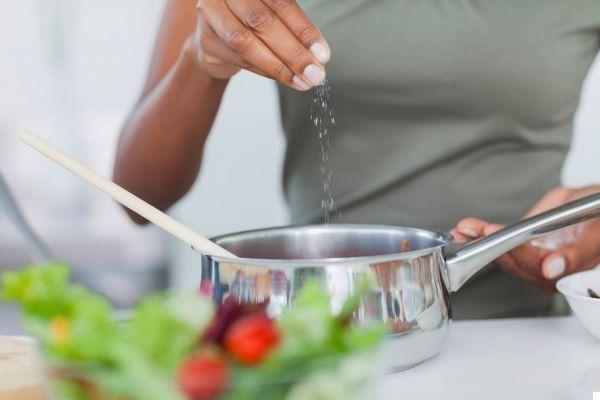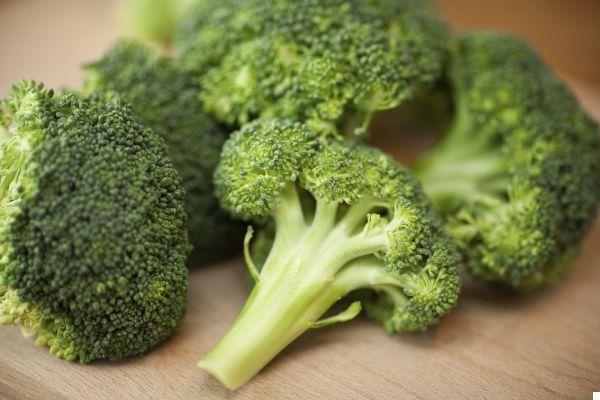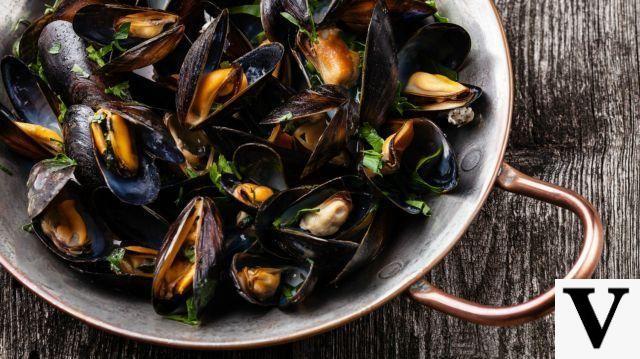
You say goiter and immediately think of a disease of the past. Instead enlargement of the thyroid gland it is a problem that still affects (albeit slightly) 10% of the population of the country. Too much. Especially if you consider that it would be enough to bring more to the table foods rich in iodine (starting with iodized salt), but also selenium and antioxidants, to put the thyroid gland, a very important endocrine gland, in a position to work at its best.
"Goiter is almost always the consequence of a insufficient functioning of the thyroid gland»Explains the doctor Pasquale Di Leo, specialist in endocrinology and oncology in Rionero in Vulture, in the province of Potenza.
"The gland increases in volume, often imperceptibly, to compensate for its reduced ability to produce the hormones T3 and T4, which regulate a number of important functions in the body: from metabolism to growth in the child, from protein synthesis to heartbeat cardiac, from intestinal motility to renal flow, from fertility to skin trophism. When the thyroid is poorly functioning, the classic symptoms are fatigue, weakness, constipation, paleness and dryness of the skin, all avoidable by following an adequate diet ».
Iodine indispensable for the thyroid
To synthesize hormones, the thyroid gland first needs iodine. «Our body is not able to produce it by itself and therefore it must provide it daily, in the right quantities, through food», Explains Dr. Di Leo, who with Professor Lucia Santarsiero, chef and food technologist, has written a book with the significant title The thyroid friendly diet (Demetra, € 16).
"The sale iodato it is the best remedy to keep the thyroid in shape: it costs little and is an easy-to-use ingredient for seasoning and cooking. In 1 g of "enriched" salt there are 30 micrograms of iodine, equal to one fifth of the 150 indicated as the daily requirement for the adult population (children need from 90 to 120 mcg and pregnant women 200 mcg). But salt should not be abused: if consumed in excess, it can in fact cause water retention, straining the kidneys, increase blood pressure and damage heart and arterial health. '
Not just salt
The World Health Organization (WHO) recommends do not exceed 5 g of salt per day, including in this dose also that naturally present in food.
"To guarantee the thyroid the iodine it needs, we cannot therefore use only enriched salt (we should use just 5 grams), but include other foods in the menu that contain the indispensable micronutrient", explains Professor Santarsiero. "Between these algae, fish, milk and eggs, while fruit and vegetables contain minimal doses. However, algae must be used carefully, to avoid over-stimulating the thyroid gland by going from a hypo to a hyperfunctioning situation. A few grams of nori and a few hundredths of a gram of kombu they are enough to cover the entire daily requirement ».
Better then to focus on fish products, inserting at least one for lunch or dinner every day of the week (see the menu and recipes below.

Selenium is also needed
In addition to iodine, you must not miss selenium at the table. "The thyroid contains a quantity (per gram of tissue) greater than any other organ," says Dr. Di Leo. «This micronutrient is for defend cells from oxidative stress. If we do not take enough, its deficiency (combined with that of iodine) leads to an increase in damage to the thyroid tissue, with progressive fibrosis of the gland and the onset of hypothyroidism ».
Professor Santarsiero adds: «The best sources of selenium are broccoli, mushrooms, cabbage, celery, cucumbers, onions, garlic, radishes, brewer's yeast, grains, fish, seaweed and offal. These foods should all be eaten preferably raw, to keep their nutrient content intact, or steamed, so as to minimize losses ».
Yes to fruit and vegetables, no to rapeseed oil
"To defend the thyroid, it is also good to fill up with vitamins and other antioxidants, eating lots of seasonal vegetables and fruit, drinking 1 glass a day of red wine (if you like) or herbal teas of karkadè and African red tea and using it to season extra virgin olive oil », continues our expert.
«Among the foods that are to be avoided, especially in cases of full-blown hypothyroidism, there are those that contain i tiociati (substances also produced by cigarette smoke), which interfere with the absorption of iodine. So watch out for rapeseed oil, various types of cabbage, mustard, horseradish, watercress and radish. And then a pears, peaches, strawberries, almonds, pine nuts, soy, sweet potatoes and cassava. Finally, it is important to remember that heat partially destroys harmful thiocyanates: it is therefore better to eat these cooked foods or, when not possible, stay away from them ».
TRY THIS WEEKLY MENU
Here is what you need to bring to the table to fill up on iodine, selenium and antioxidants (the essential nutrients for the thyroid to function at its best). For seasoning and cooking, use extra virgin olive oil and iodized salt (added raw).
Breakfast
● Yogurt or fresh semi-skimmed milk or another hot or cold drink.
● Rusks (or bread or rice cakes or other bread substitutes) with jam or (instead of rusks with jam) a small portion of dessert (occasionally) with seasonal fruit (not cooked).
Snack
● 1 handful of nuts (Brazil nuts, walnuts) or oil seeds (chia, sesame, flax).
● Fresh semi-skimmed milk or white yogurt without sugar or 1 fruit juice (without added sugar) or 1 fresh fruit in season.
------------------------------
Merenda
● 1 seasonal fruit
● 1 herbal tea to taste.
Lunch
● Dry pasta or rice with fish or shellfish sauce (recipe on the right) or legumes or vegetables or meat or cereal soup and 1 second course based on fish, meat, eggs, fresh cheese.
● Vegetables or seasonal vegetables (raw or steamed).
Price
● Brothy soups or vegetable creams or steamed rice or legume soup or 1 second course based on fish or shellfish, meat, eggs, fresh cheese.
● Mixed salad or cooked vegetables.
● Seasonal fruit.
THE RECIPES FOR 2 DISHES RICH IN IODINE
- Risotto with clams, prawns and lime
Ingredients for 4 people
280 g of Carnaroli rice, 300 g of prawns, 300 g of clams, 100 ml of dry sparkling wine, 30 g of butter, 4 tablespoons of extra virgin olive oil, 1 clove of garlic, 1 lime, 1/2 onion, 1 bunch of chopped parsley.
For the shrimp stock: 2 liters of water, 1 celery stick, 2 carrots, 1/2 onion, prawn heads and shells and iodized salt.
Put all the ingredients for the comic in a saucepan. Cook for at least 30 minutes, filter and set aside. Sprinkle a double-bottomed pan with oil and fry a crushed clove of garlic, the clams (already drained) and chopped parsley. Deglaze with half of the dry sparkling wine and close with the lid until the shells of the molluscs have opened. Collect the cooking juices, filter and add to the shrimp stock.
Keep the clams aside. In a saucepan with a little oil and a part of the butter, brown 1/2 chopped onion; add the rice and let it toast. Blend with the remaining sparkling wine and gradually pour in the prepared cartoon. Halfway through cooking add the peeled prawns and finish by flavoring with lime juice. Stir in the remaining butter and serve decorating with the shelled clams, some prawn tails and parsley.

- Peppered mussels with ginger
Ingredients for 4 people
1 kg of fresh mussels, 300 g of datterini tomatoes, 4 tablespoons of extra virgin olive oil, 100 ml of dry white wine, 4 croutons of fresh Matera IGP bread (or other type of homemade bread), 2 cloves of garlic , 1/2 red pepper, 1 tablespoon of chopped parsley, 1/4 teaspoon of powdered ginger, iodized salt, pepper.
Clean and wash the mussels and cut the cherry tomatoes in quarters. In a pan, sauté 1 clove of crushed garlic, parsley and chopped chilli in oil. Add the mussels, cover with a lid and wait for them to hatch.
Blend with the white wine, let it evaporate and add the cherry tomatoes; season with salt and pepper and complete with a sprinkling of ginger. Serve the impepata garnishing with the toasted bread passed on the plate and rubbed with the remaining clove of garlic.


























